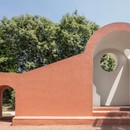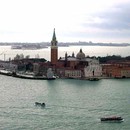Biography
Portuguese architect, Eduardo Souto de Moura (1952) graduated from the Academy of Fine Arts, Porto (ESBAP) in 1980. While still a student, he worked with Alvaro Siza Vieira (1974-1979), becoming his assistant at the University of Porto for a decade.
Completing his education after the so-called “Carnation Revolution” (1974) that swept away traditional academia in Portugal, Souto de Moura “surfaced in the international debate due to his ability to capture the cultural and historical aspect of design” (Angelillo), quickly becoming "a master in the use of reinforced concrete and renovation of historic buildings”in the postmodern era.
His design approach has been likened to “Miesian due to his constant use of masonry and, in particular, his meticulous attention to detail" (Treccani).
Whilst working with Siza, Souto de Moura gained experience in establishing SAAL groups, independent interdisciplinary groups, set up to address the housing emergency in major Portuguese cities. This experience would be fundamental to his career, geared towards “reality” (including reclamation of local materials and traditional techniques), an essential contribution far removed from the abstract.
This design approach is evident in the renovation of a ruin in Vieira do Minho (1982), the municipal market in Braga (1984), and the transformation of a monastery in Amares (1997).
At a time of transition between classicism and globalization, Souto de Moura put forward individual, experimental solutions, such as those for housing in Nevogilde, Porto and Braga, built between 1985 and 1994.
Acclaimed, major works in line with his design philosophy include a pavilion at Expo 1998 in Lisbon, Oceans: A Heritage for the Future, and the Portuguese Pavilion at Expo 2000, Hannover, conversion of the customs building into the Museum of Transportation and Communications and the House of Movies, both in Porto, completed in 2002, together with the Braga Stadium (2004), which received the Chicago Athenaeum International Architecture Award in 2006, and Bragança Contemporary Arts Center (2008).
His body of work also includes the Metro Station (2005) and Burgo Tower office complex with 2 towers, Porto (2007), the House of Stories, Cascais (2009) dedicated to the Portuguese artist Paula Rego, and Cultural Centers in Sabrosa (2011) and Viana do Castelo (2013).
The crematorium at Hoog-Kortrijk cemetery, Belgium (2011) is an earth and grass-covered building, with elevations that glide rhythmically over the sloping ground, blending into the landscape while maintaining the perspective and silence.
Numerous reconversion projects, a sector in which Souto De Moura is one of the leading figures worldwide, include the renovation of structures, where possible, flanked by new buildings, yet always appropriate for the surrounding landscape.
In his refurbishment work, he focuses on a functional and systematic future, eliminating excess and the superfluous, while promoting the preservation of historic memory and existing architectural heritage.
In this respect, notable examples include the School of Tourism and Hotel Management and restoration of the former Robinson factory in Portalegre (with Graça Correia, 2011), conversion of the Bernardas Convent, Tavira to residential use (2012), river basin plan with service pavilion, development plan and 27 single-family homes in the vast area of Lagoa das Sete Cidades, São Miguel in the Azores (ongoing since 2007), and the renovation of an agricultural estate converted into a luxury hotel in São Lourenço do Barrocal (2017).
In recent years, other collaborations with Alvaro Siza include the Municipal Subway Station, Naples (2015), creation of MIEC (International Contemporary Sculpture Museum) and refurbishment of MMAP (Municipal Museum Abade Pedrosa) in Santo Tirso (2016).
He was awarded the Pritzker prize in 2011 for a body of work that is “convincing proof of the modern expressive potential of language and its adaptability to different local situations, always mindful of context, in its broadest sense, and based on place, time and function”.
Other significant awards include the Wolf Prize in Arts in 2013, whilst in 2018 he won the Golden Lion at the Venice Architecture Biennale “for his precision in pairing two aerial photographs, revealing the essential relationship between architecture, time and space“.
Eduardo Souto De Moura selected works
- Cappella in pietra per il Padiglione Vaticano, Biennale di Architettura 2018, Venezia (Italia), 2018
- Albergo diffuso e ristrutturazione tenuta agricola, São Lourenço do Barrocal, Monsaraz (Portogallo), 2017
- Ristrutturazione del Museo Civico Abade Pedrosa - MMAP (con Alvaro Siza), Santo Tirso (Portogallo), 2016
- Museo Internazionale di Scultura Contemporanea - MIEC (con Alvaro Siza), Santo Tirso (Portogallo), 2016
- Cantareira Building, Porto (Portogallo), 2013
- Centro culturale, Viana do Castelo (Portogallo), 2013
- Convento Das Bernardas, Taviea (Portogallo), 2012
- Crematorio "Uitzicht" del cimitero Hoog-Kortrijk, Kortrijk, (Belgio), 2011
- Centro culturale Miguel Torga, Sabrosa (Portogallo), 2011
- Auditorium A, Portalegre (Portogallo), 2011
- 27 abitazioni, Sete Cidades, Ponta Delgada (Portogallo), 2011
- Hotel e Scuola di Catering (con Graça Correia), Portalegre (Portogallo), 2011
- La Pallaresa, Santa Coloma de Gramenet, Barcellona (Spagna), 2011
- Casa das historias Paula Rego, Cascais (Portogallo), 2009
- Centro d’Arte Contemporanea, Bragança, (Portogallo), 2008
- Burgo Tower, Porto (Portogallo), 2007
- Residenza, Maia (Portogallo), 2007
- Stazione metropolitana, Porto (Portogallo), 2005
- Padiglione della Serpentine Gallery (con Alvaro Siza), Hyde Park, Londra (Gran Bretagna), 2005
- Stadio comunale, Braga (Portogallo), 2004
- Casa del cinema Manoel de Oliveira, Porto (Portogallo), 2002
- Trasformazione della dogana in Museo dei Trasporti e delle Comunicazioni, Porto (Portogallo), 2002
- Padiglione portoghese all’Expo 2000 (con Alvaro Siza), Hannover (Germania), 2000
- Padiglione della conoscenza dei mari all’Expo 1998, Lisbona (Portogallo), 1998
- Stazioni della Metropolitana, Porto (Portogallo), 1997 e seguenti
- Riconversione del convento di Santa Maria do Bouro, Amares (Portogallo), 1997
- Dipartimento di Geologia dell’Università di Aveiro (Portogallo), 1994
- Abitazione per tre famiglie, Quinta de Lago, Almasil (Portogallo), 1989
- Casa 2, Nevogilde (Portogallo), 1988
- Mercato municipale, Braga (Portogallo), 1984
- Recupero di un rudere, Vieira do Minho (Portogallo), 1982
Related Articles: Eduardo Souto de Moura
Related Articles









